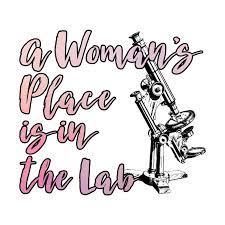In the ever-evolving world of science, technology, engineering, and mathematics (STEM), women are proving that their place is indeed in the lab. While historically a male-dominated field, today’s STEM landscape is witnessing a remarkable change as more and more women are breaking barriers and pushing the boundaries of scientific discovery.
The journey towards gender equality within the STEM workforce has not been an easy one. For years, women have faced discrimination and unequal opportunities based on their gender. Social constructs and biases have led to a widely held belief that men are better suited for careers in STEM disciplines. However, evidence continues to emerge that proves this notion wrong.
One inspiring example of women excelling in the field is Rosalind Franklin. An English chemist and X-ray crystallographer, her groundbreaking work in understanding the molecular structure of DNA laid the foundation for further critical discoveries in genetics. Many argue that without her contributions, Watson and Crick may not have received their Nobel Prize for their DNA structure model.
Today, several organizations and initiatives are working tirelessly to provide opportunities for women to succeed in STEM fields. One such initiative is Secondary Assembly. Designed to support women entering or transitioning within STEM disciplines, Secondary Assembly aims to address traditional gender biases and shake off the stereotypes that have plagued female potential for far too long.
Secondary Assembly focuses on nurturing a woman’s ability to excel in various laboratory settings by providing them with opportunities for hands-on experience, mentorship, networking, and showcasing their achievements at conferences or industry events. This support system allows women to develop practical skills alongside theoretical knowledge – something invaluable in equipping them for success within STEM disciplines.
Additionally, celebrating successful female scientists acts as a catalyst for change by raising awareness of the incredible accomplishments by women in STEM fields. Inspiring figures like Marie Curie – who became the first person ever to win two Nobel Prizes – can be seen as trailblazers for women’s representation in science.
However, there is still much work to be done. Despite these positive changes happening across the STEM landscape, only 28% of the global research workforce is made up of women. Organizations like Secondary Assembly play a crucial role in changing this narrative by empowering the future leaders of science and promoting gender diversity within the lab.
We must continue to encourage more girls to engage with STEM subjects and foster a passion for scientific exploration, regardless of their gender. To move towards a more equitable and inclusive future, it is now more important than ever that we nurture a culture that celebrates diversity within labs, boardrooms, and classrooms alike.
In conclusion, a woman’s place is undeniably in the lab. As we collectively dismantle barriers and encourage equal opportunities for women in science, technology, engineering, and mathematics disciplines, one thing is certain – the future of STEM is filled with limitless potential for growth, innovation, and discovery. And this potential will only be realized when gender equality becomes the norm.





